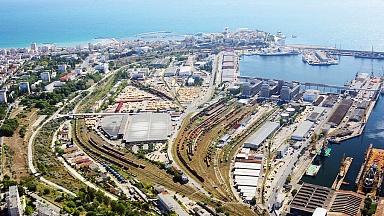The North-South International Transport Corridor is a key element of the transport framework of Eurasia. It joins most of the latitudinal Eurasian transport corridors. The role of the North-South ITC is growing significantly in the context of the formation of «new logistics» and the restoration of international transport and logistics chains after the shocks associated with the COVID-19 pandemic. Separate routes of the corridor require investments to eliminate missing links (the unfinished section of Rasht-Astara) and infrastructure bottlenecks.
Interest in the development of the North-South ITC as an element of «new logistics» continues to grow. At the same time, the successful development of the North-South ITC is hampered by various barriers in the field of both physical and soft infrastructure, reflected in the report. The corridor development is most affected by missing links and bottlenecks in the transport and logistics infrastructure, the lack of a coordinated through rate, paper-based border crossing procedures, as well as the deficiency of an effective coordination mechanism for managing the corridor.
In order to eliminate infrastructure barriers on all three routes of the corridor, projects for the construction, reconstruction and modernization of transport infrastructure of international importance are being implemented or are planned for implementation. As part of the research, a database was created from more than 100 investment projects for the development of the infrastructure of the North-South ITC. The total investment for the implementation of all ongoing or planned infrastructure projects is $38.2 billion. Under the influence of barriers, the transportation of goods along the corridor is carried out with large delays, especially at land border points and seaports. According to UNESCAP, 50% of transit time is spent crossing borders. As a result, the duration of transportation between Moscow and the port of Bandar Abbas, which should be 6 days along the Western route, doubles due to delays at border crossings and reaches 10–13 days. The time for road transportation along the Eastern route increases even more significantly and reaches 10-12 days.
The benefits of improving soft infrastructure can be comparable to the financial haul of developing physical infrastructure. In particular, the digitalization of vehicle and cargo control processes at the borders is comparable in effect to the construction of additional control strips and inspection platforms.
The expected results from the implementation of investment projects and the development of soft infrastructure at the North-South ITC should be an increase in cargo flows and an acceleration in the delivery of goods, a rise in the efficiency of using the transport infrastructure included in the Eurasian transport framework, a hike in the market for transport and forwarding services and an amelioration in the quality of logistics and container services, improving transportation safety and transport security in the Caspian region, developing a constructive dialogue between the countries participating in the development of the corridor on transport issues and building the «new logistics».


